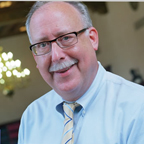Burney Lecturer: The Future of Urban Health (web article)
 In the next year, humanity will cross a meaningful threshold: for the first time in history, half of the world’s population will live in urban areas. Compare this to 1950, when only 29 percent of the world’s population was urban. Then think ahead to the year 2030, in which 60 percent of the projected 8.2 billion people on the planet will reside in cities. These milestones, said David Vlahov, warrant considerable public health planning.
In the next year, humanity will cross a meaningful threshold: for the first time in history, half of the world’s population will live in urban areas. Compare this to 1950, when only 29 percent of the world’s population was urban. Then think ahead to the year 2030, in which 60 percent of the projected 8.2 billion people on the planet will reside in cities. These milestones, said David Vlahov, warrant considerable public health planning.
With the world becoming so urban so rapidly, Vlahov, director of the Center for Urban Epidemiologic Studies at the New York Academy of Medicine, says it’s critical that we pay close attention to the health of city-dwellers. The United States is already an urban population: 85 percent of our population lives in urban or metropolitan areas. So Vlahov asks, “Isn’t urban health just public health?”
On September 24, Vlahov, PhD, RN, delivered the 2007 Annual Dr. Leroy E. Burney Lecture at the Bloomberg School, in which he considered the health of the world’s cities. In his lecture, “Urban Health: Evidence, Challenges and Direction,” he weighed what he calls the “urban health penalty” against the “urban health advantage.”
The concept of the urban health penalty, Vlahov explained, is an intuitively familiar one. Large cities, particularly areas inhabited by the urban poor, are collectively viewed as places of “concentrated disadvantage”—with high crime, high rates of violence, and so on.
But, Vlahov said, cities also offer an urban health advantage. Some benefits of urban living include proximity to health care facilities, social service agencies, affluence, culture and diversity—all of which can bring resources to the poor and provide a bridge to political mechanisms.
During the lecture, Vlahov illustrated three strategies for leveraging the urban health advantage.
In the first of these, an innovative New York City project is adopting conditional cash transfer programs, which create cash incentives for the urban poor to proactively seek good health. The $3 million pilot study offers poor families, for example, $25 per month for every child who has 95 percent attendance at school, and it offers similar incentives for preventive health care, steady employment and conferences with teachers.
The second strategy Vlahov explained was participatory budgeting, an approach in which citizen groups propose projects, such as a sports field or an academy, that benefit their neighborhoods. As an example of the strategy’s success, he cited a project underway in a slum of Belo Horizonte, Brazil.
Lastly, Vlahov pointed to urban design as the third viable strategy for improving urban health. “Smart growth” and “new urbanism” will create ecological and social sustainability, human-scale architecture, intergenerational, mixed-income housing, and integrated transportation with “walkable” neighborhoods. He referred to a city repair project with positive results in Sunnyside Piazza, a neighborhood in Portland, OR.
“By the year 2030, half of the buildings in the U.S. will have been built after the year 2000,” Vlahov said, in support of careful urban design.
As he ended the lecture, Vlahov reminded the audience of urban health challenges faced in the past. During the Industrial Revolution, infectious diseases were curbed by infrastructure and sanitation. In the 1970s air pollution wreaked havoc, and the Clean Air Act mitigated this crisis. What are the current urban health dilemmas? “The curves going up today,” Vlahov said, “are energy use, greenhouse gas, climate change and obesity.”—Christine Grillo
The Dr. Leroy E. Burney Lecture was established at the Bloomberg School of Public Health in 1998 to honor Dr. Burney’s life work in public health and medical education. This lecture is delivered annually at the School by distinguished scholars who address public health issues that affect the health of the people of the world.
